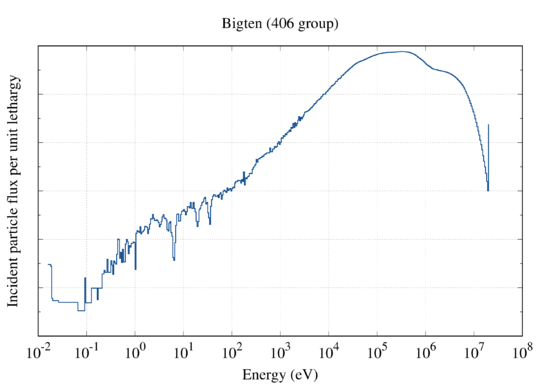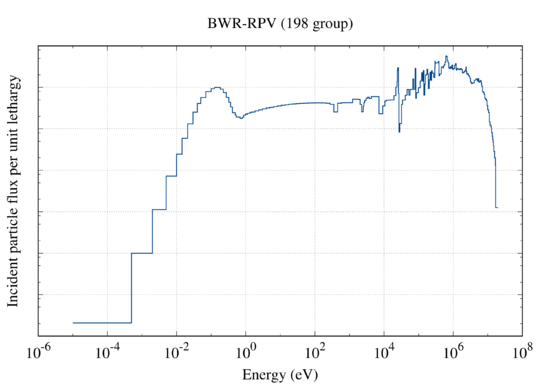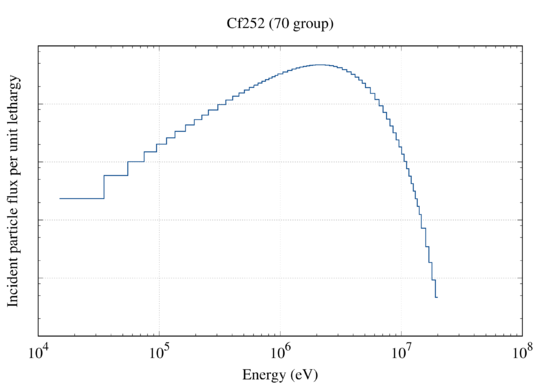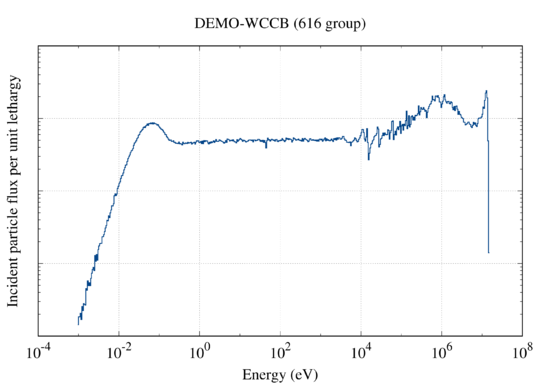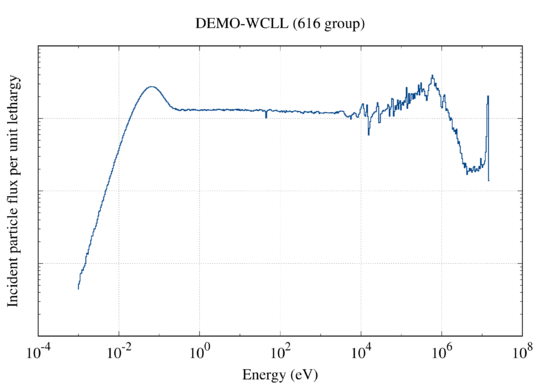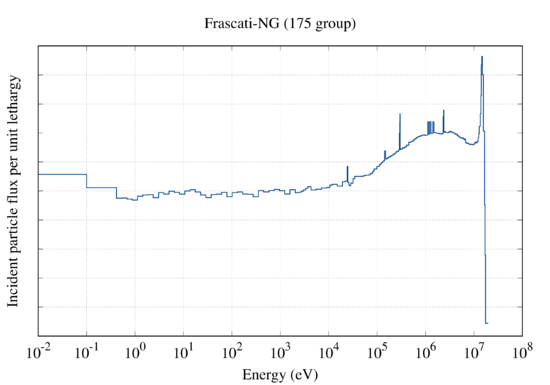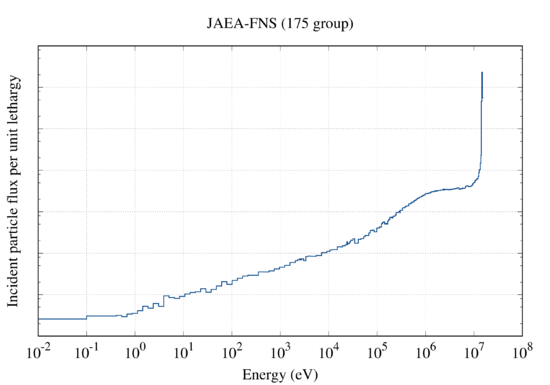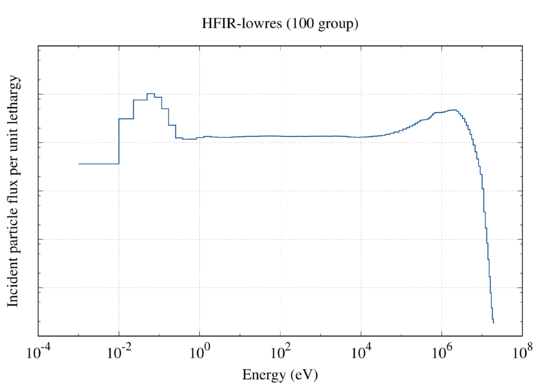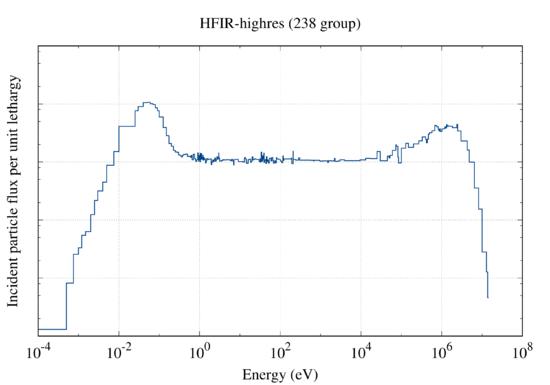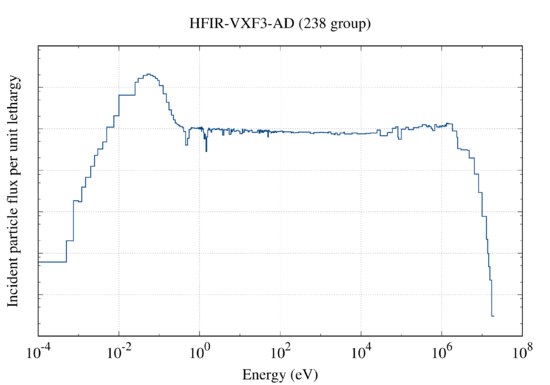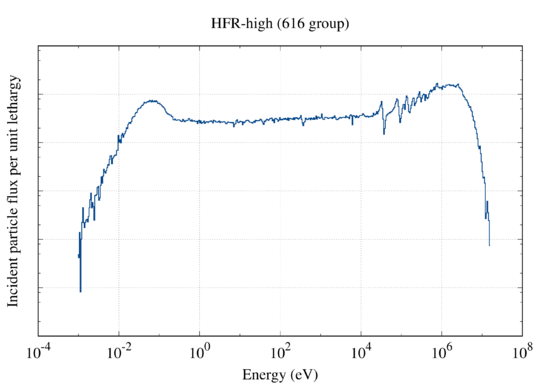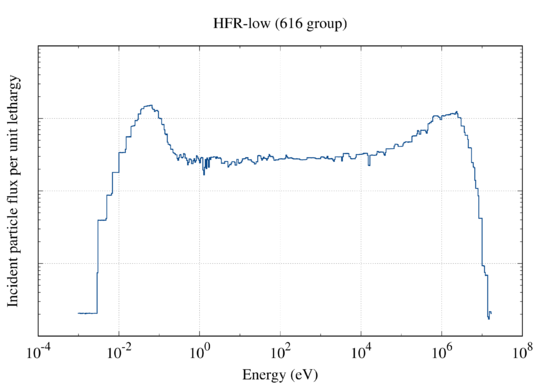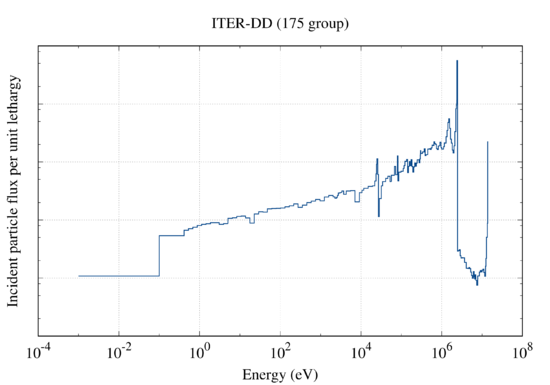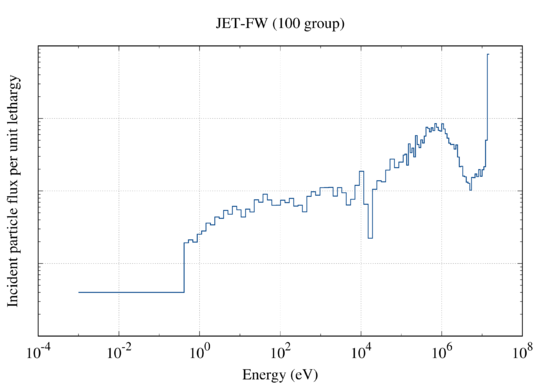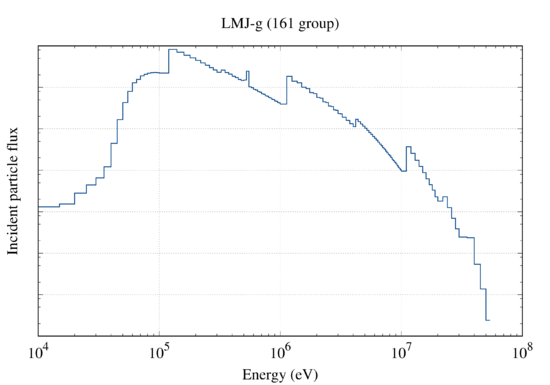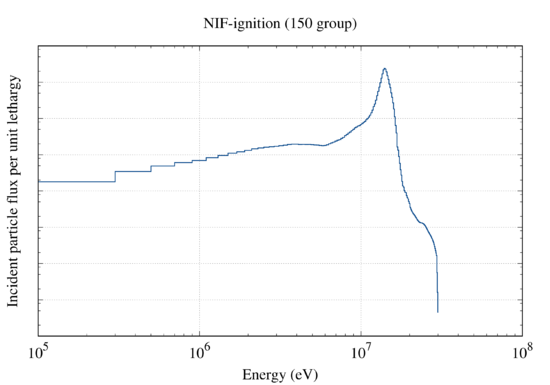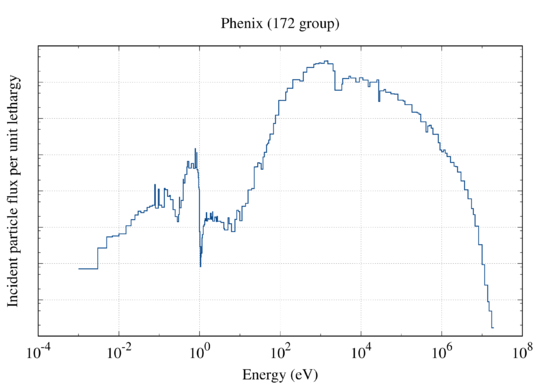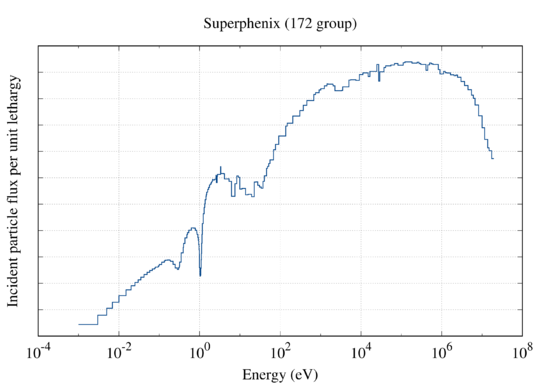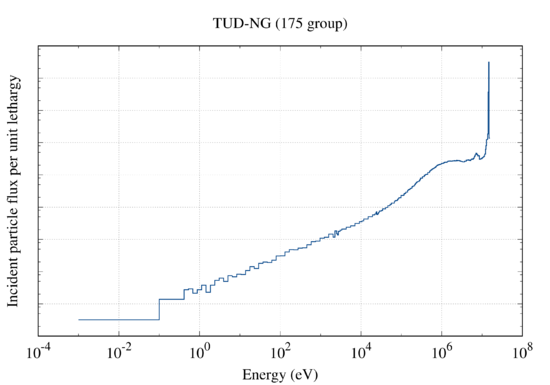Reference input spectra
The collapsed cross-sections depend strongly on the nature of the projectile spectra, and so it is important to use the appropriate spectrum together with the appropriately-weighted cross-section data. With the advances of modern simulation software and high resolution spectra the user is reminded of the importance of the tails, low or high-energy ones, on the reaction rates.
The majority of neutron-application spectra stem from light-water assemblies, mock-ups or reactors where the integral responses are strongly, if not solely, influenced by the energy ranges of the fission spectra and thermal maxwellian. Fusion spectra that have been obtained from magnetic confinement (MCF) or inertial confinement fusion (ICF) present typical D-D 2.5 MeV, or D-T 14 MeV peaks sometimes accompanied by a higher-energy tail, but also showing rather different slowing-down profiles. Accelerator-driven beam spectra are important in their role in nuclear data acquisition and materials research, but also for medical therapeutic and diagnostic applications.
In essence the particle spectrum profile, through the collapsing process, emphasises the energy region of most importance for each application. Transferring data from one application or energy range to another should be done with great care as it can easily lead to misleading and inappropriate numerical results.
Several incident particle spectra are provided in the table below, mostly including neutron incident spectra but with some charged particle spectra. Note that these are provided in the original energy group structures as generated by the code(s) that calculated them. These are often not the same energy group structures as those provided for e.g. the TENDL nuclear data libraries and require a flux conversion using GRPCONVERT. Note that while the group conversion can easily be performed, this cannot add structure when moving to a refined group structure when moving to a more refined multi-group.
Each of the spectra below is provided in the format of an arbitrary flux arb_flux file for reading in the GRPCONVERT module as well as a figure showing the spectrum in flux per unit lethargy using an arbitrary normalisation. For convenience, all of the arb_flux files are available in the table below.
